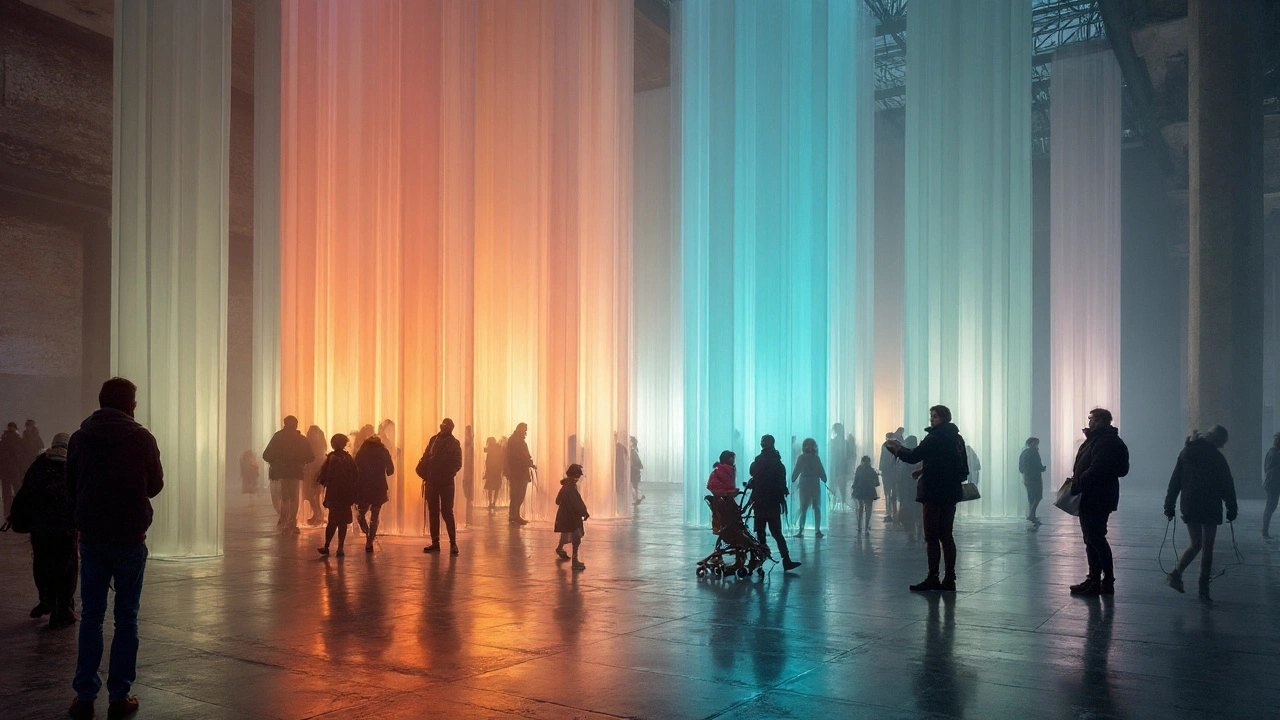Art Installations Examples: What to See and Why They Wow
Ever walked into a room and felt the space itself was part of the artwork? That’s the power of an installation. It’s not just a painting on a wall or a sculpture on a pedestal – it’s a whole environment designed to make you think, feel, or even move. Below you’ll find some real‑world examples and easy ways to get the most out of them.
Installation art mixes materials, light, sound, and sometimes even smell to transform a gallery or public area. The artist builds a setting that you can walk through, touch, or interact with. Because the piece lives in the space, each visit can feel different – the same work might look fresh at night, on a rainy day, or after a crowd passes by.
Famous Installation Pieces You Should Know
1. "The Weather Project" – Olafur Eliasson (2003)
In the Tate Modern Turbine Hall, Eliasson filled the space with a huge artificial sun and mist. The ceiling glowed amber, and visitors could lie on the floor and watch the light change. The piece turned the museum into a dreamy, almost meditative landscape.
2. "Infinity Mirror Room – Phosphorescent Light" – Yayoi Kusama (1965‑present)
Kusama’s mirrored rooms create the illusion of endless space filled with glowing dots. Step inside, and you feel like you’re floating among stars. The simple set‑up of mirrors and LED lights makes a huge visual impact.
3. "Rain Room" – Random International (2012)
This work lets you walk through a downpour without getting wet. Sensors detect your movement and pause the rain where you stand. The experience mixes technology with nature and makes you think about control and vulnerability.
4. "The Obliteration Room" – Yayoi Kusama (2002‑present)
A white room is given to visitors who stick colored dot stickers all over the walls, floor, and furniture. Over time the space transforms into a chaotic burst of color, showing how collective action can change a place.
5. "All the Lights in A City" – Ann Veronica Janssens (2005)
Janssens drapes a whole building façade in thin sheets that catch, bend, and scatter light. At night the structure glows like a living lantern. It’s a simple material used in a surprising way.
How to Experience Installations on Your Own
First, check the museum or gallery’s website for current shows. Many big institutions have a rotating schedule of installations, and they often post videos or photos to give you a preview.
Second, go early. Installations can get crowded, and the artist’s intent is often to let you move slowly and notice details. Arriving when it’s quiet lets you hear subtle sounds or see faint lighting effects.
Third, bring an open mind. Some pieces look strange at first – a pile of trash, a room of mirrors, or a wall of thousands of tiny objects. Instead of judging, ask yourself what feeling or question the artist is trying to raise.Fourth, engage physically if the work invites it. Touching, stepping, or even speaking can be part of the experience. If a piece has a rule (no touching, no photos), respect it – it’s part of the design.
Finally, take a quick note or sketch. Even a short scribble can help you remember how the space felt later, especially if you plan to revisit the work or compare it with other installations you see.
Installation art isn’t just something to look at; it’s something to live in for a few minutes. By checking schedules, arriving early, and staying curious, you’ll get more out of each piece and maybe discover a new favorite way to enjoy art.

